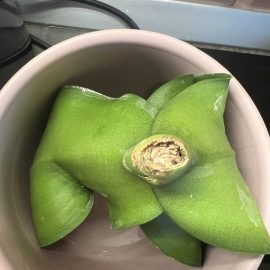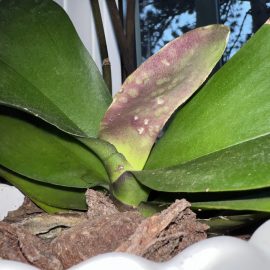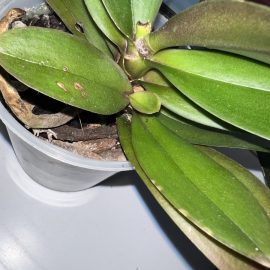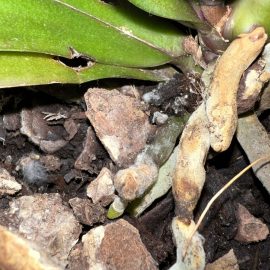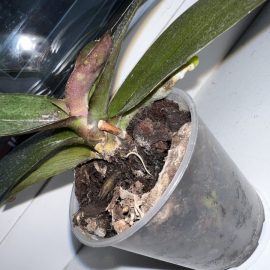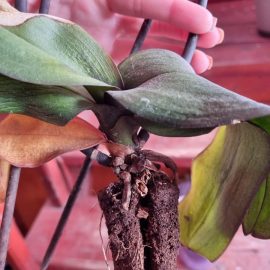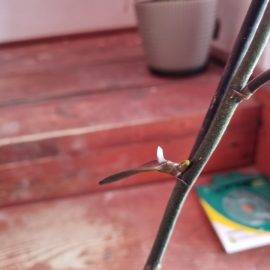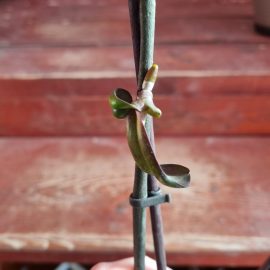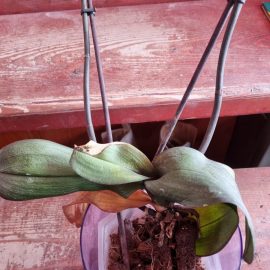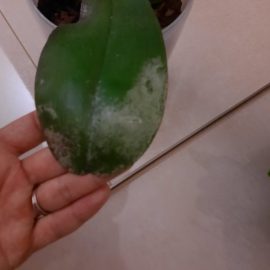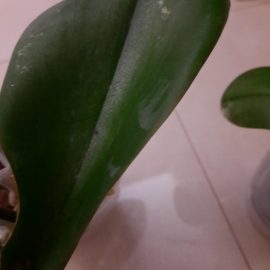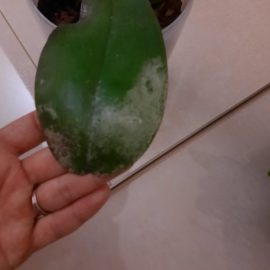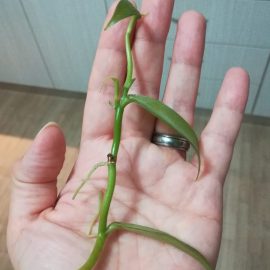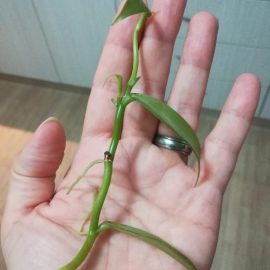Oncidium, information and care tips
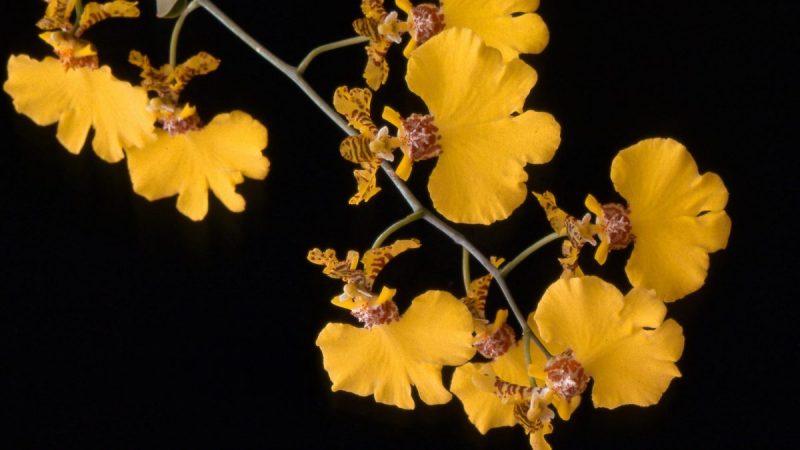
Oncidium orchids are a graceful and captivating genus known for their delicate stems adorned with tiny, butterfly-shaped blossoms. Their enchanting appearance has earned them the endearing nicknames “butterfly orchids” and “dancing ladies.” While most Oncidium species typically bloom in autumn, vibrant hybrid varieties can showcase their floral splendor throughout the year. These epiphytic gems, naturally adapted to thrive on tree trunks, make exquisite additions to indoor gardens. Their long, cascading flower spikes are a mesmerizing sight, bursting with a profusion of tiny, vibrant blooms that radiate a tropical ambiance.
Types of Oncidium orchids
- Oncidium leucochilum
- O. longipes


- O. sarcodes
- O. pulchellum


Care tips – Light
Oncidium orchids are warmth-loving plants that thrive in bright light. They are slightly more tolerant of heat and direct sunlight compared to other popular orchid species. A west- or east-facing window provides ideal conditions, but they can also tolerate a south-facing position in semi-shady conditions during the summer months. Intense direct sunlight during flowering and cold temperatures accompanied by low humidity should be avoided.
Observe the leaf color to determine if the plant is receiving the optimal amount of light. Healthy, properly lit plants exhibit bright, vibrant, light-green foliage. However, if the plant is not getting enough light, its leaves may appear pale or yellow. Conversely, excessive light exposure can cause the leaves to turn dark green or even reddish-pink.
Soil
Orchids are epiphytes, meaning they grow attached to other plants or objects, rather than in the soil. As such, they require a special growing medium that mimics their natural environment. This medium should be well-draining and aerated to prevent the roots from sitting in water for too long. Some common orchid substrates include bark chips, perlite, and sphagnum moss.
Recommended products
-
You can find products on a different store
Change Store -
You can find products on a different store
Change Store -
You can find products on a different store
Change Store -
You can find products on a different store
Change Store -
You can find products on a different store
Change Store -
You can find products on a different store
Change Store -
You can find products on a different store
Change Store -
You can find products on a different store
Change Store -
You can find products on a different store
Change Store -
You can find products on a different store
Change Store -
You can find products on a different store
Change Store -
You can find products on a different store
Change Store -
You can find products on a different store
Change Store -
You can find products on a different store
Change Store -
You can find products on a different store
Change Store -
You can find products on a different store
Change Store -
You can find products on a different store
Change Store -
You can find products on a different store
Change Store -
You can find products on a different store
Change Store -
You can find products on a different store
Change Store -
You can find products on a different store
Change Store -
You can find products on a different store
Change Store -
You can find products on a different store
Change Store -
You can find products on a different store
Change Store
Temperature and humidity
In general, Oncidium orchids need temperatures between 20°C -25°C during the day and 15°C-20°C at night. Lower temperatures at night stimulate flowering.
Orchids thrive in a humid environment, with an ideal humidity range of 40-70%. In dry climates, where the air is often dry, it is important to take steps to increase the humidity around your orchids. Two effective methods for increasing humidity are the use of a humidifier and a gravel tray.
A gravel tray is a simple and effective way to increase humidity around orchids. To create a gravel tray, fill a shallow tray with gravel and pour enough water into the tray to cover the gravel. Place a saucer on top of the gravel and position your orchid pot on top of the saucer. As the water evaporates from the gravel, it will create a humid microclimate around your orchid.
Also, avoid placing the plant near heat sources in winter.
Watering
Orchid substrates should be kept moist but not soggy or saturated. Most orchids prefer their potting medium to dry out slightly between waterings to allow proper root aeration and prevent root rot due to excess water accumulation.
To water the orchid, submerge the pot in water for 10-15 minutes until the substrate is thoroughly soaked. Then, remove the pot from the water and allow it to drain excess water from the pot and saucer. Ensure that no water enters the center of the leaf rosette or at the point where the leaves insert onto the stem, as this can lead to rotting.
Water quality: tap water can be used, previously kept for 24 hours in an open container. Rainwater, preferably from a less polluted area, is highly recommended for watering indoor plants. Whatever the source of water, it should be given to the plant when it is room temperature to protect it from heat shock.
Optimal watering time: Watering should be conducted early in the morning to allow the substrate to fully aerate and dry by nightfall. Avoid watering in the evening to prevent the accumulation of moisture, which can lead to fungal growth and root rot.
Fertilisation
Fertilize your Oncidium orchid once a week during the active growing season (spring and summer) when the plant is actively producing new growth. During the dormant season (fall and winter), when the plant’s growth slows down, reduce or eliminate fertilization to avoid overfeeding. Use a balanced orchid fertilizer, following the manufacturer’s instructions carefully to avoid damaging the delicate roots.
Recommended products
-
You can find products on a different store
Change Store -
You can find products on a different store
Change Store -
You can find products on a different store
Change Store -
You can find products on a different store
Change Store -
You can find products on a different store
Change Store -
You can find products on a different store
Change Store -
You can find products on a different store
Change Store -
You can find products on a different store
Change Store -
You can find products on a different store
Change Store -
You can find products on a different store
Change Store -
You can find products on a different store
Change Store -
You can find products on a different store
Change Store -
You can find products on a different store
Change Store -
You can find products on a different store
Change Store -
You can find products on a different store
Change Store -
You can find products on a different store
Change Store -
You can find products on a different store
Change Store -
You can find products on a different store
Change Store -
You can find products on a different store
Change Store -
You can find products on a different store
Change Store -
You can find products on a different store
Change Store -
You can find products on a different store
Change Store -
You can find products on a different store
Change Store -
You can find products on a different store
Change Store
Potting and Repotting
This task should be done every 12 to 24 months, preferably in the spring or after the flowers have wilted. Avoid repotting plants that are currently in bloom or about to bloom, as this may cause the flowers to fall off.
Repotting serves a dual purpose: refreshing the plant’s soil and providing more space for its roots to flourish. While a larger pot may be necessary if roots are tightly packed, a significant increase in pot size can hinder flowering by diverting energy towards root growth. Instead, opt for a pot that is only slightly larger than the current one to optimize plant health and encourage abundant blooms.
Pruning
Pruning should be done after the flowers have finished blooming (when the petals have withered and the stems have started to decline). To prune, you’ll need a sharp, sterilized tool.
Recommended products
-
You can find products on a different store
Change Store -
You can find products on a different store
Change Store -
You can find products on a different store
Change Store -
You can find products on a different store
Change Store -
You can find products on a different store
Change Store -
You can find products on a different store
Change Store -
You can find products on a different store
Change Store -
You can find products on a different store
Change Store -
You can find products on a different store
Change Store -
You can find products on a different store
Change Store -
You can find products on a different store
Change Store -
You can find products on a different store
Change Store -
You can find products on a different store
Change Store -
You can find products on a different store
Change Store -
You can find products on a different store
Change Store -
You can find products on a different store
Change Store -
You can find products on a different store
Change Store -
You can find products on a different store
Change Store -
You can find products on a different store
Change Store -
You can find products on a different store
Change Store -
You can find products on a different store
Change Store -
You can find products on a different store
Change Store -
You can find products on a different store
Change Store -
You can find products on a different store
Change Store
Additionally
In the genus Oncidium we can also find orchids that have a special fragrance:
- “Sharry baby” has a distinct chocolate smell;
- “Twinkle” has a smell similar to vanilla;
- Oncidium chrysomorphum smells like citrus.





















































































































































































































































































































































































































































